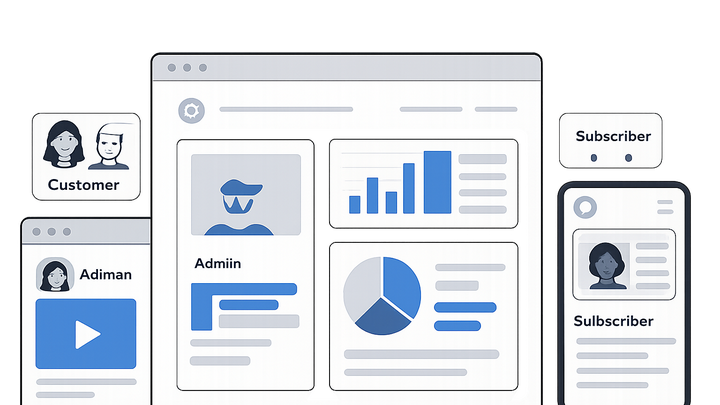Published on 2025-06-29T19:51:42Z
What Is Website Personalization? Examples and Benefits
Website personalization refers to customizing web content, layout, and user journeys based on individual visitor behaviors, preferences, and demographics. It leverages segmentation and dynamic content to deliver relevant experiences. In the context of conversion rate optimization (CRO), UX, and SEO, personalization can significantly enhance engagement and reduce bounce rates. By tailoring calls-to-action, product recommendations, and page layouts, businesses can guide visitors through optimized paths, thereby increasing lead generation and sales. Tools like Prevue.me provide actionable critiques focused on personalization opportunities, highlighting areas for improvement in CRO, UX, accessibility, and SEO. Implementing personalization strategies requires a balance between data-driven insights and respect for user privacy, ensuring compliance with regulations.
Website personalization
Tailoring website experiences to individual users to boost engagement, conversions, and satisfaction using data-driven segmentation and content.
Why Website Personalization Matters
Personalization transforms static websites into dynamic experiences that speak directly to each visitor. By aligning content with user intent, brands can capture attention, reduce bounce rates, and foster loyalty. In competitive markets, relevance drives conversions and word-of-mouth referrals. From an SEO standpoint, improved engagement signals can boost rankings. Ultimately, personalization is a cornerstone for modern CRO and UX strategies.
-
Enhanced user engagement
Delivering content that matches user interests keeps visitors on your site longer and encourages exploration.
- Relevant content:
Show articles, products, or features based on previous visits or expressed preferences.
- Improved navigation:
Highlight sections or pages that align with individual user journeys.
- Relevant content:
-
Increased conversion rates
Personalized calls-to-action and offers resonate more deeply, leading to higher form submissions and sales.
- Tailored ctas:
Adjust messaging, placement, and offers based on visitor segment or behavior.
- Optimized landing pages:
Serve variant pages with custom headlines, images, or testimonials for specific audiences.
- Tailored ctas:
-
Improved seo performance
Relevant content encourages longer sessions and repeat visits, sending positive signals to search engines.
- Lower bounce rates:
Engaging users with personalized content reduces single-page exits.
- Higher dwell time:
Dynamic recommendations keep users browsing and interacting.
- Lower bounce rates:
Key Components of Website Personalization
Effective personalization relies on several core elements: understanding who your users are, what they want, and how best to deliver it. Data collection, segmentation, and a reliable personalization engine work together to create seamless experiences.
-
User segmentation
Grouping visitors by shared attributes or behaviors to target them with relevant content.
- Demographic segmentation:
Using age, location, or job title to tailor messaging.
- Behavioral segmentation:
Segmenting based on browsing history, clicks, and purchase patterns.
- Demographic segmentation:
-
Dynamic content delivery
Automatically swapping page elements—text, images, offers—based on segment rules.
- Product recommendations:
Suggest items based on past views or purchases.
- Customized banners:
Display promotional banners that align with user interests or campaigns.
- Product recommendations:
-
Personalization engine
The technology layer—rule-based or AI-driven—that decides what to show each visitor.
- Rule-based engines:
If-then rules that serve specific content under defined conditions.
- Ai-driven engines:
Machine learning models that predict user preferences in real time.
- Rule-based engines:
Implementation Strategies
Choosing the right approach depends on your budget, technical resources, and data maturity. Mix and match rule-based methods with AI to start simple and scale complexity over time.
-
Rule-based personalization
Quick to implement using URL parameters, user cookies, or explicit form inputs.
- Url parameter targeting:
Append campaign or segment IDs to URLs to trigger specific content.
- Cookie-based rules:
Store user preferences in cookies to persist experiences across sessions.
- Url parameter targeting:
-
Ai-powered personalization
Leverage machine learning to analyze patterns and serve predictions.
- Predictive analytics:
Forecast user needs and deliver content before users search for it.
- Real-time recommendations:
Continuously update offers or products based on live behavior.
- Predictive analytics:
-
Testing and optimization
Continuously validate personalization rules with experiments to refine performance.
- A/b testing:
Compare personalized vs. generic experiences to quantify lift.
- Multivariate testing:
Test multiple elements simultaneously to uncover the best combinations.
- A/b testing:
Measuring Impact and ROI
Track the right metrics to demonstrate the value of personalization efforts and justify further investment.
-
Key metrics to track
Identify both engagement and business outcomes to gauge success.
- Conversion rate:
Percentage of visitors completing a desired action under personalized experiences.
- Engagement metrics:
Session duration, pages per session, and click-through rates on personalized elements.
- Average order value:
Track upsell or cross-sell lift from personalized recommendations.
- Conversion rate:
-
Using tools like prevue.me
Leverage specialized CRO and UX audit platforms to uncover personalization opportunities.
- Actionable cro critiques:
Get prioritized recommendations on where personalization can drive the biggest gains.
- Lead generation optimization:
Identify form and landing page tweaks to capture more high-intent leads.
- Actionable cro critiques:
Challenges and Best Practices
While personalization offers huge rewards, it also introduces complexity. Plan for privacy, performance, and ongoing relevance to maintain trust and effectiveness.
-
Privacy and data compliance
Ensure you collect, store, and use data in accordance with GDPR, CCPA, and other regulations.
- User consent management:
Implement clear opt-in mechanisms and preference centers.
- Data minimization:
Collect only the data you need to power personalization.
- User consent management:
-
Balancing personalization with performance
Dynamic content can impact page load times if not properly optimized.
- Lazy loading:
Defer non-critical personalized elements until after initial page render.
- Edge caching:
Cache variant content at CDN edge servers to reduce latency.
- Lazy loading:
-
Maintaining relevance over time
User preferences and behaviors evolve, so personalization logic must be reviewed regularly.
- Content freshness:
Rotate offers and creative assets to avoid fatigue.
- Re-segmentation:
Periodically update user segments based on new data points.
- Content freshness:
